This is the fifth post in a series of Nikon D850 tests. The series starts here.
I made a series of dark-field exposures at ISO 1000 at all the timed shutter speeds that the D850 supports, with LENR off. I measured the rms read noise in counts (data numbers, if you prefer) in a 400×400 pixel central square. The result looks like this:
Between 1/4 and 1/5 second, the read noise drops. That usually indicates raw cooking. I looked at the frequency characteristics of the raw noise over the whole frame of the 1/4 second and 1/5 second images.
Both of those look white, so whatever Nikon is doing, it’s not low-pass filtering.
Let’s check 30 seconds just to make sure.
No filtering there, either.
Now let’s look at the full frame histograms of the 1/5 second and 1/4 second images:
There is a little shift in the mean values, but nothing stands out.
I’m not sure what Nikon is doing at 1/4 second and slower to reduce noise.
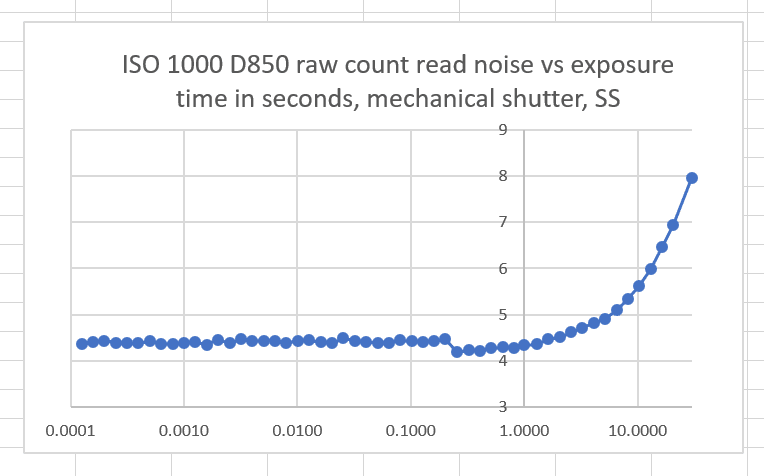

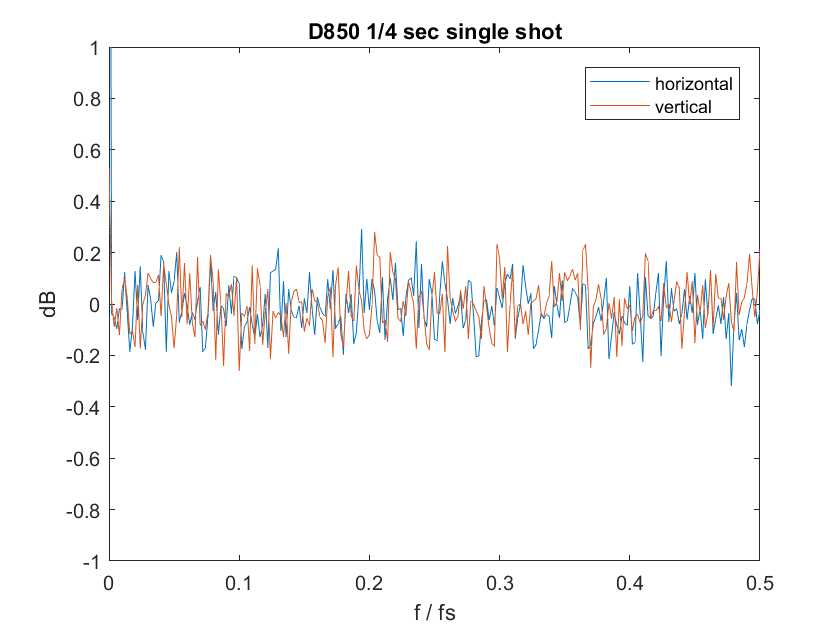
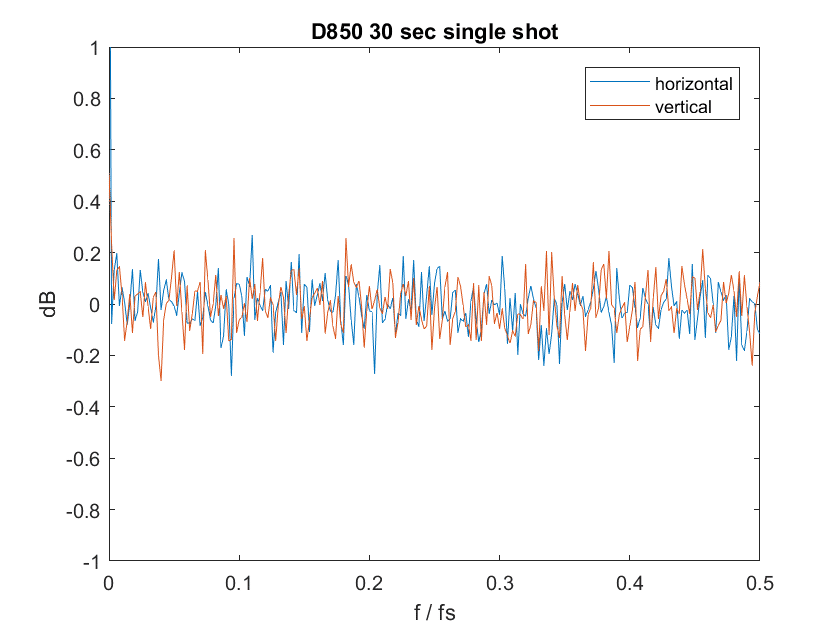
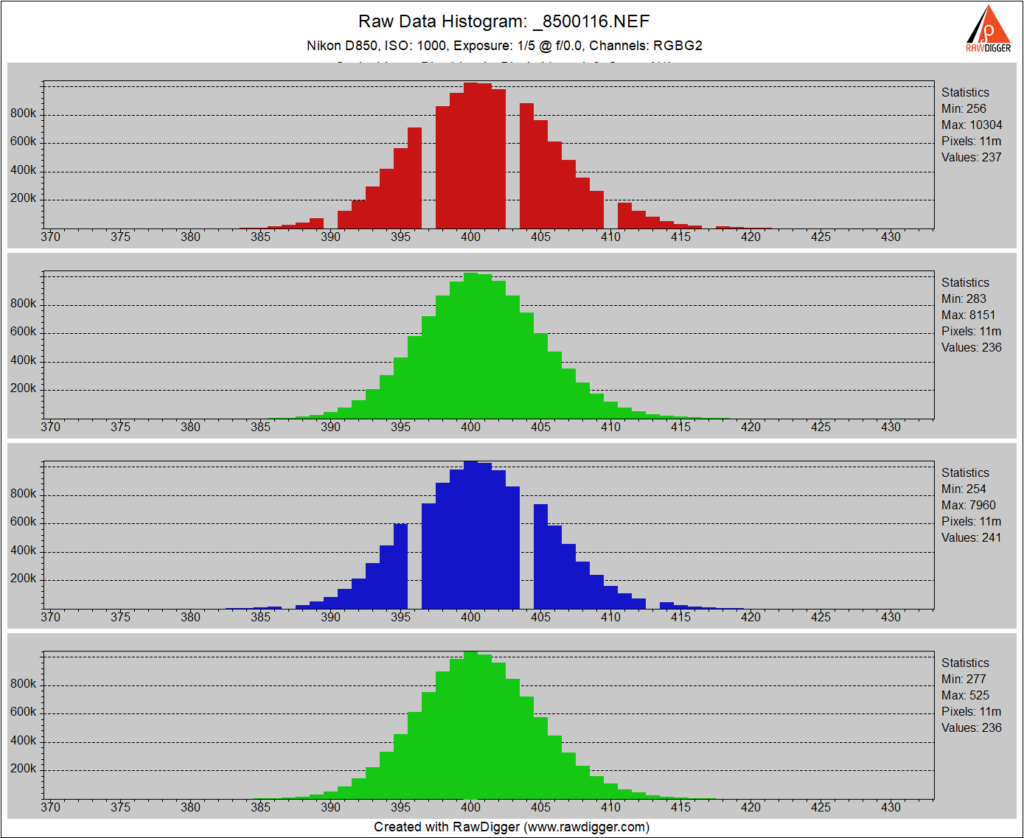
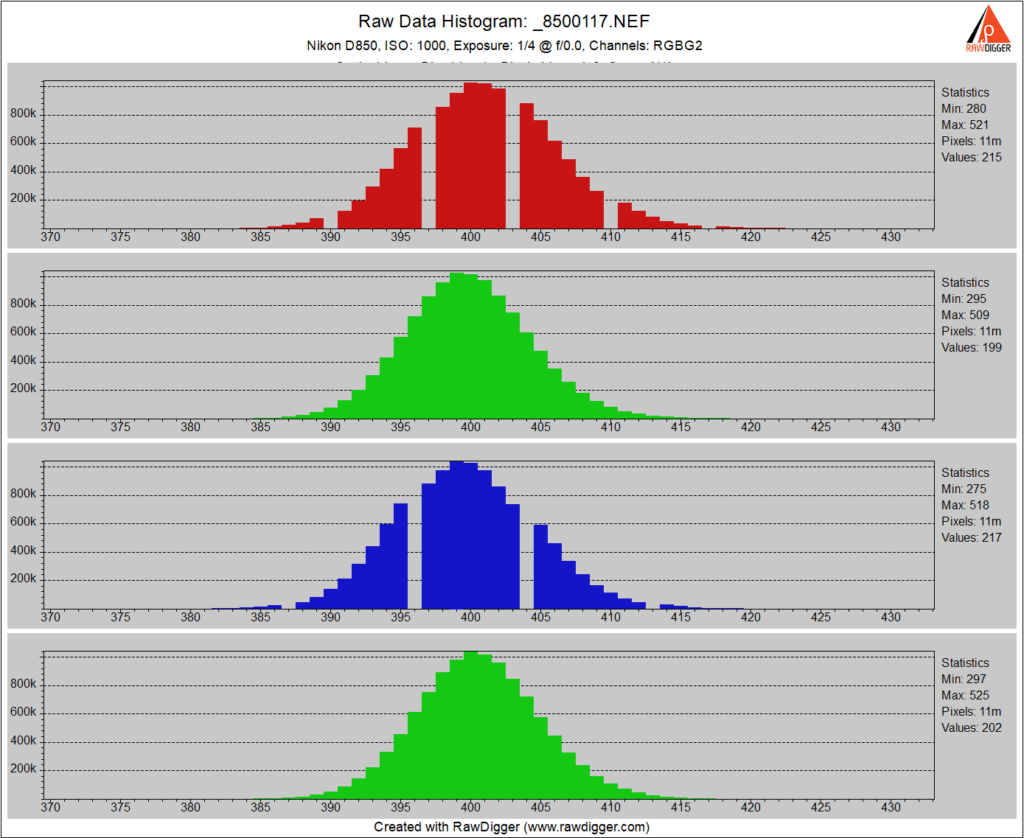
Jim, thanks 🙂
I think that histograms in log scale (vertically) would be more informative .. we could see if outliers are cut-off @1/4sec shots ..
BTW .. have you checked where the vertical seam lies in your D850’s sensor ?. It’s easy to detect it on an overexposed shot and applying extreme contrast curve. Maybe you should not use exactly the central area for measures ..
Maybe this is the reason for the histograms having a slight skew to the left (longrer tails at the right)
Thanks for the idea about log scale. These histograms are full-frame; I’ll edit the post to make that clear. I’ll take your advice next time I do a sampled measurement.
See the abnormal central verical zone ..
https://drive.google.com/file/d/0B0NqktTgc54sVy1DNVl1UVllLVE/view?usp=sharing
Horizontal looks almost as if its shifted up on axis. The sigma look less so I think there is definitely something going on.
Nikon traditionally kicks in its hot pixel suppression scheme at 1/4s and longer exposures.
https://www.dpreview.com/forums/post/56901347
So far, I could not figure out Nikons’s HPS algorithm for cameras D7200 and newer. But, your detailed analysis here may have given me a hint for a new go at this.
Jim, do you have any long exposures at very high ISOs
http://blog.kasson.com/wp-content/uploads/2017/10/iso-25600-1024×838.png
If Nikon does something after digitization then we should see some gaps filling .. and so intendify most of the interpolated/altered pixels ..
I’ll look at that when I get a chance, but right now I’m up to my ears in a7RIII testing, which has some urgency since it just started shipping.